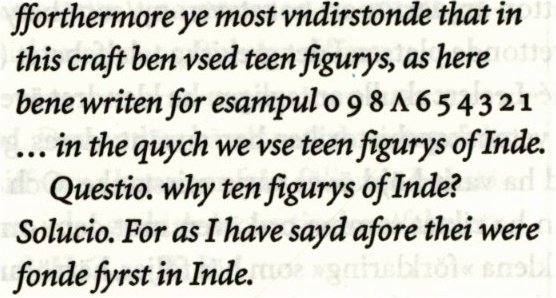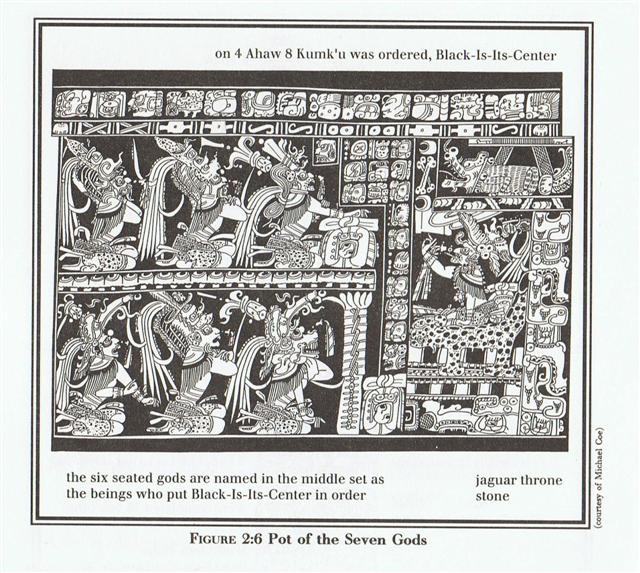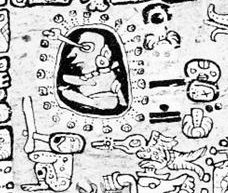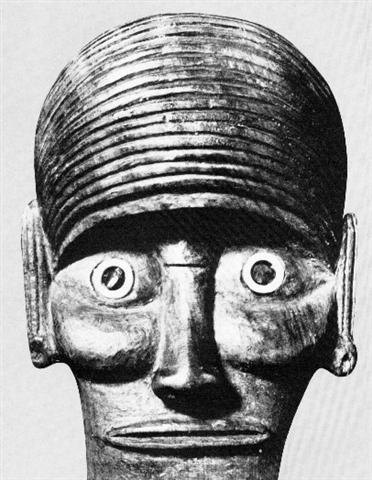504. We will find the position of August 2 (214) at the Full Moon when the Sun reached day 32 (February 1):
The notches in the Pachamama (World Mother) tresses resemble lambda (Λ) and also the sign for seven (7), presumably indicating a time when the Sun was absent (at the back side of the face of the earth):
On Easter Island it was Rigel together with the New Moon which defined where the new year was beginning and therefore side b (the back side) of the C tablet could have been used for noting where the Pleiades were.
... In view of the almost universal prevalence of the Pleiades year throughout the Polynesian area it is surprising to find that in the South Island and certain parts of the North Island of New Zealand and in the neighboring Chatham Islands, the year began with the new Moon after the yearly morning rising, not of the Pleiades, but of the star Rigel in Orion ... 214 (August 2) - 32 = 182 (July 1):
The 'eye' (or face, mata) in front in Cb4-6 could indicate my right ascension day January 1 because this was - at the time of rongorongo - corresponding to the first day in the Sun calendar used north of the equator, i.e. when the Full Moon reached Alhena. ... I have used right ascension days instead of right ascension hours because it was convenient. The 24 right ascension hours (lines of 'longitude') are primarily lines for finding stars at a certain time in the night, but by changing to right ascension days I suggest the rongorongo texts were primarily created for finding stars in a certain night of the year ...
The last part of the old year would therefore stretch, the text on the back side of the C tablet seems to say, for 84 nights (12 weeks) counted from November 13:
A low sky roof was closely above at midwinter in contrast to the high sky roof of midsummer. ... They were Ranginui, the Sky Father, and Papatuanuku, the Earth Mother, both sealed together in a close embrace. Crushed between the weight of their bodies were their many children, whose oppression deepened. They yearned to be free; they fought their parents and each other to break loose. Tuumatauenga, virile god of war, thrust and shouted; Tangaroa of the oceans whirled and surged; Tawhirirangimaatea, Haumiatiketike and Rongomatane, of wild foods and cultivated crops, tried their best but were not successful; and Ruamoko, god of earthquakes, yet to be born, struggled in the confinement of his mother's womb ... Of them all, Taane Mahuta, the god of the forests, was the most determined; he set his sturdy feet upon his father's chest, and braced his upper back and shoulders against the bosom of his mother. He pushed; and they parted. So the world, as the Maori understand it, came into being ...
The head of the ua (rain) dance paddle at left illustrates this low sky and the large pupils necessary when Sun (at night) was absent, whereas the head of the ao (daylight) dance paddle at right demonstrates a high sky supported by a tall palm tree pillar (nikau) in its center. At its beginning, before this palm had grown up and lifted the sky roof, it was only a nut (niu):
There are 78 'notches' (nights) to be counted in the first quarter of the Pachamama tresses - maybe referring to Rigel (*78) - and number 29 could then have been used on the left side because 364 - 16 = 348 (number of glyphs on side b of the C tablet) = 12 * 29.
On side b glyph number 29 (as in the dark black night of the New Moon) was where the Full Moon reached the 6 stones (Tau-ono) and counted from there to February 1 there were 79 days. ... Ecclesiastically, the equinox is reckoned to be on 21 March (even though the equinox occurs, astronomically speaking, on 20 March [79] in most years) ...
... They all sat down and rested [on the plain of Oromanga], when suddenly they saw that a turtle had reached the shore and had crawled up on the beach. He [Ira] looked at it and said, 'Hey, you! The turtle has come on land!' He said, 'Let's go! Let's go back to the shore.' They all went to pick up the turtle. Ira was the first one to try to lift the turtle - but she didn't move. Then Raparenga said, 'You do not have the necessary ability. Get out of my way so that I can have a try!' Raparenga stepped up and tried to lift the turtle - but Raparenga could not move her. Now you spoke, Kuukuu: 'You don't have the necessary ability, but I shall move this turtle. Get out of my way!' Kuukuu stepped up, picked up the turtle, using all his strength. After he had lifted the turtle a little bit, he pushed her up farther. No sooner had he pushed her up and lifted her completely off the ground when she struck Kuukuu with one fin. She struck downward and broke Kuukuu's spine.The turtle got up, went back into the (sea) water, and swam away.
All the kinsmen spoke to you (i.e. Kuukuu): 'Even you did not prevail against the turtle!' They put the injured Kuukuu on a stretcher and carried him inland. They prepared a soft bed for him in the cave and let him rest there. They stayed there, rested, and lamented the severely injured Kuukuu. Kuukuu said, 'Promise me, my friends, that you will not abandon me!' They all replied, 'We could never abandon you!' They stayed there twenty-seven [27 = 56 - 29 = precessional depth down to Roman times] days in Oromanga.
Everytime Kuukuu asked, 'Where are you, friends?' they immediately replied in one voice, 'Here we are!' They all sat down and thought. They had an idea and Ira spoke, 'Hey, you! Bring the round stones (from the shore) and pile them into six heaps of stones!' One of the youths said to Ira, 'Why do we want heaps of stone?' Ira replied, 'So that we can all ask the stones to do something.' They took (the material) for the stone heaps (pipi horeko) and piled up six heaps of stone at the outer edge of the cave. Then they all said to the stone heaps, 'Whenever he calls, whenever he calls for us, let your voices rush (to him) instead of the six (of us) (i.e., the six stone heaps are supposed to be substitutes for the youths). They all drew back to profit (from the deception) (? ki honui) and listened. A short while later, Kuukuu called. As soon as he had asked, 'Where are you?' the voices of the stone heaps replied, 'Here we are!' All (the youths) said, 'Hey, you! That was well done!' ...
|
|||||||||||||||||||||||||||||||||||||||||||||||||||||||||||||||||||||||||||||||||||||||||||||||||||||||||||||||||||||||||||||||||||||||||||||||||||||||||||||||||||||||||||||||||||||||||||||||||||||||||||||||||||||||||




















